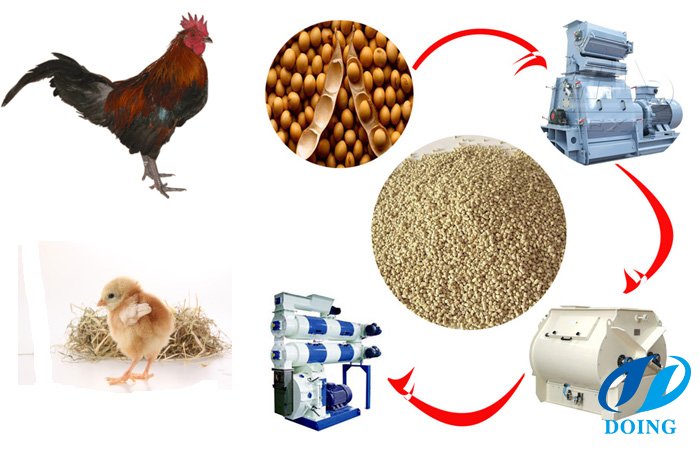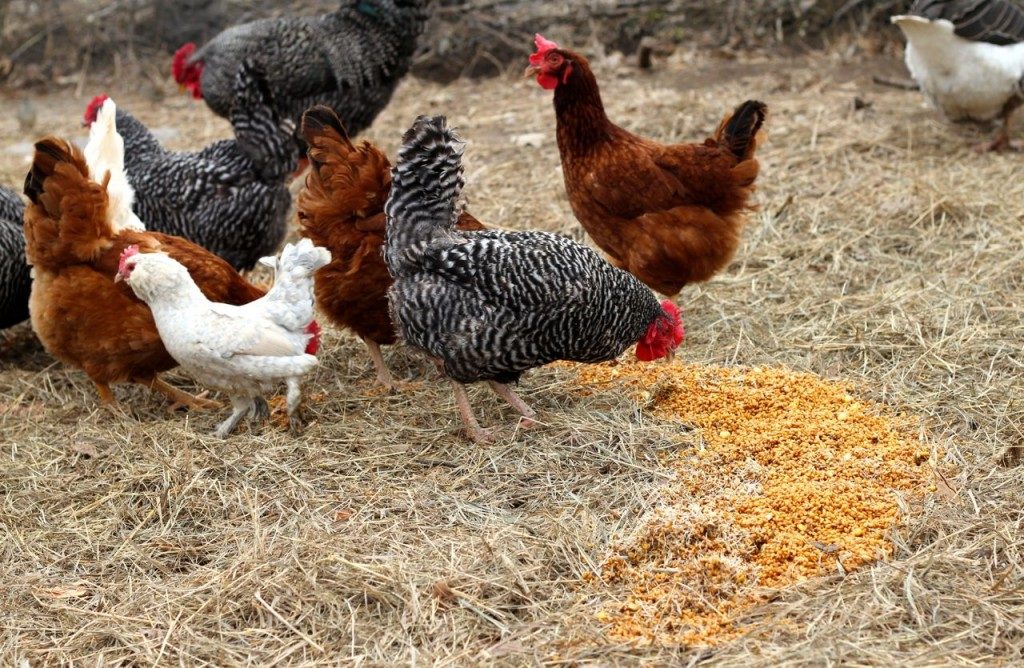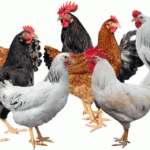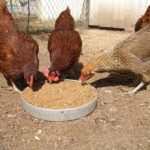Chicken feeds take 70% of the costs of chicken farming. Farmers should therefore make every effort to provide the best quality chicken feeds to your chicken, in the right quantities at the least possible cost. Any farmer who can creatively reduce this percentage while maintaining the recommended feeding regimes and healthy well fed flock gains more from poultry farming.
There are a variety of commercial feeds in the market by ascertaining their ingredients is a difficult task. While a few companies produce quality feed, there are a number of unscrupulous companies selling contraband feeds that do not meet quality standards because they miss several required ingredients. There are farmers who feed their chicken dedicatedly on commercial feeds yet see no change in conversion of feed to meat in their flock and more still no improvement in egg laying. They is also the challenge of cost. Commercial feeds are very expensive and heavy reliance on them can eat significantly into farm incomes.

A few Kienyeji chicken that are less than one hundred in the backyard or within the compound can easily be fed using kitchen waste and then released to scavenge within the compound gaining proteins from worms, other carbohydrates and fibre, eating grass and grit. This can easily happen in cases where the chicken have a large chicken run around the chicken house or a large compound where they can easily and safely scavenge. However any farmer who wants to go into continuous commercial production of more than hundred birds can easily make their own feed at home and cut the down the cost of feeds by up to 50% using feed components can be easily accessed in any locality in Kenya.
While formulating feeds, we need to be guided by the following factors:
- Nutrient requirement for the bird.
- Availability of the raw materials.
- Price of the raw materials
- Presence of anti-nutritive factor.
There are components that are required for the required development of the bones and for production. These include, maize, sorghum, millet, pollard, maize germ, tubers and bran among others. These ingredients are rich in energy and form a significant part of the homemade feed. Maize germ can easily be accessed through local maize millers who sell it as a byproduct of the maize milling process.

The second category of feed components are the protein rich like termites, cotton seed cake and sunflower meal, soya meal, blood meal and fish meal among others.
Another category is minerals like and vitamins like grass and vegetables or cow dung for chicken that are allowed to roam around the chicken run or compound.
Chicken also require salts. Salt should be added to chicken feed at the rate of 0.2% to 0.5%. There exists in local agrovets red salt ideal for poultry. Where this is not available, the normal human table salt can be used in small quantities, but must be properly mixed within the feeds together with other components during feed making to avoid concentration on only section of the feed.

Finally there are feed components that contain no nutrients but serve other useful purposes like grit and toxin binder. While grit help chicken with digestion, toxin binder is used to preserve feed in cases where they are to be stored for a longer time or where the farmer suspects that during formulation of the feed, some components could have been moist hence placing the feed at risk of molding.
For each group of feed components required, there are lots of local alternatives, so there is no excuse to fail to make your own feeds and cut down on costs.
You can easily make chick marsh for young chicks, growers’ marsh for growing birds that need body growth and layers marsh for laying birds so you receive quality eggs from the highest percentage of laying birds.
However, even if you make your own feeds, there are dangers of over feeding or under feeding your flock. The following is the recommended feeding quantities for chicken of various ages:
| Age (in Weeks) | Feed Intake per Bird per Day (Grams Dry Weight) |
| 1 | 12-15 |
| 2 | 15-21 |
| 3 | 21-35 |
| 4-6 | 35-50 |
| 7-8 | 55-60 |
| 16-27 | 68-80 |
| 28 | 100 |
NB: Multiply the quantity required to feed one bird per day by the number of birds you have to get the quantity you need to give per day for all chicken in your farm. Once this is exhausted by the birds, just give plenty of water and let the birds rest.
For more information on how to make your feeds, the correct mixing quantities for each of the categories and the recommended feed formula, visit the link below and purchase the Kienyeji chicken feed formulation manual.
Good luck!


